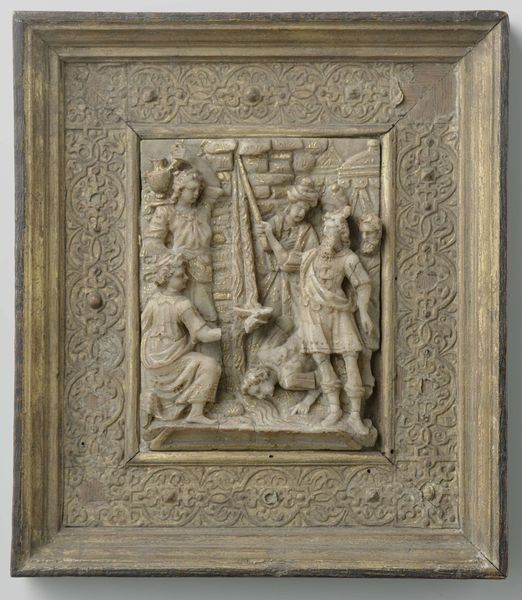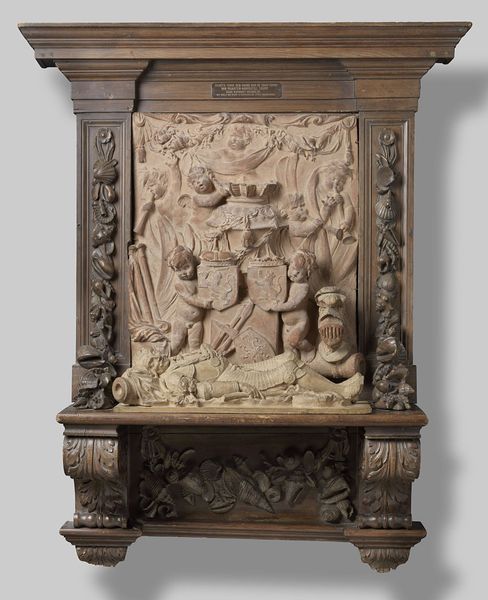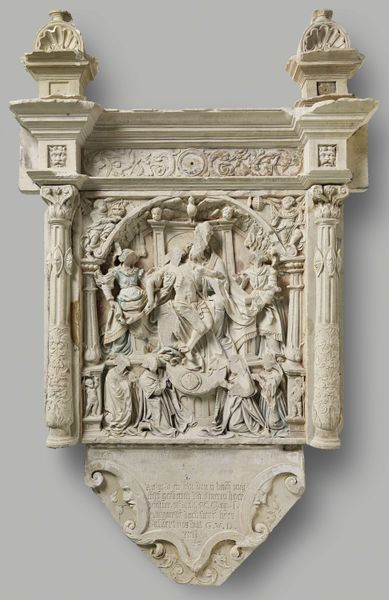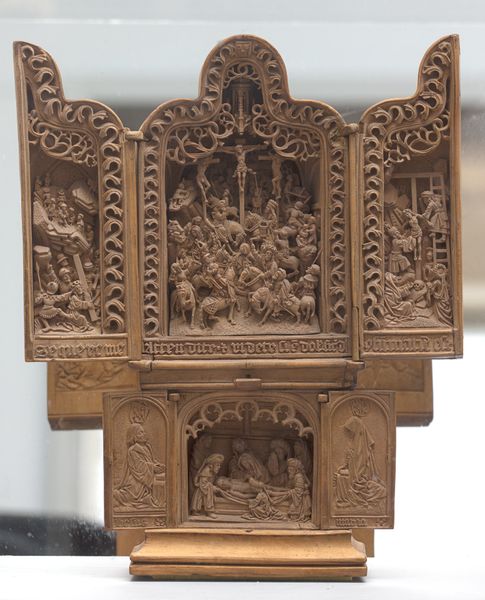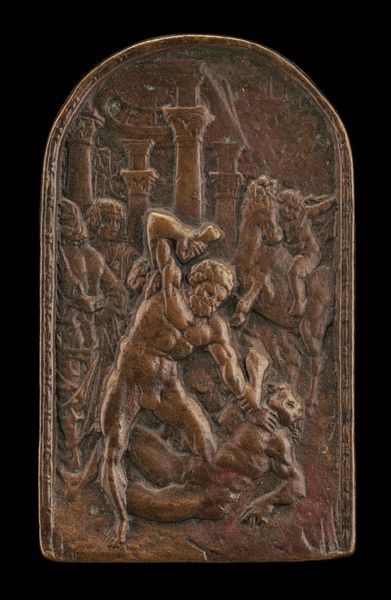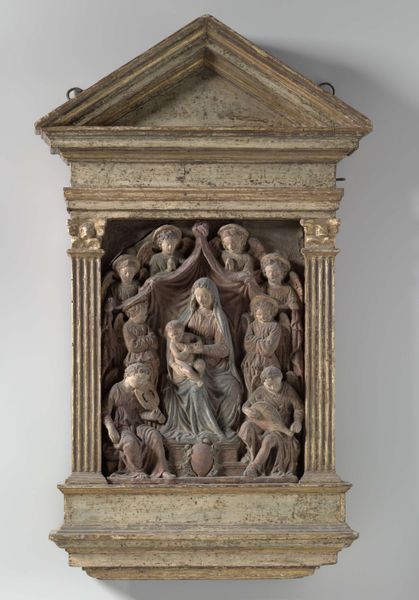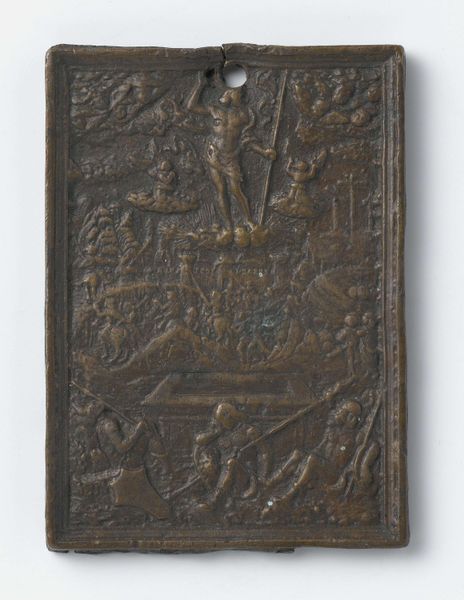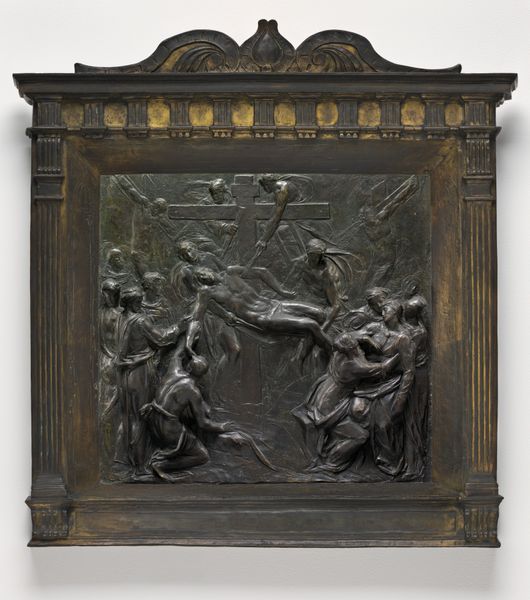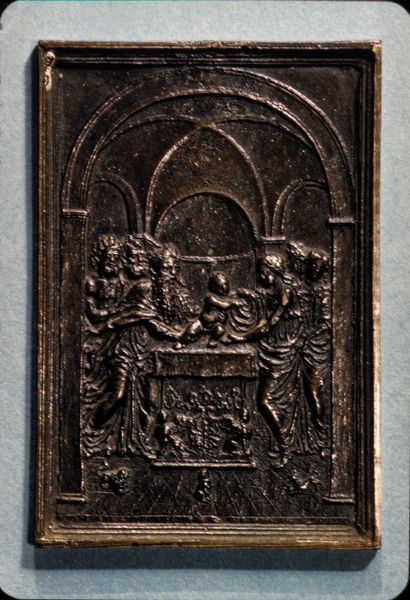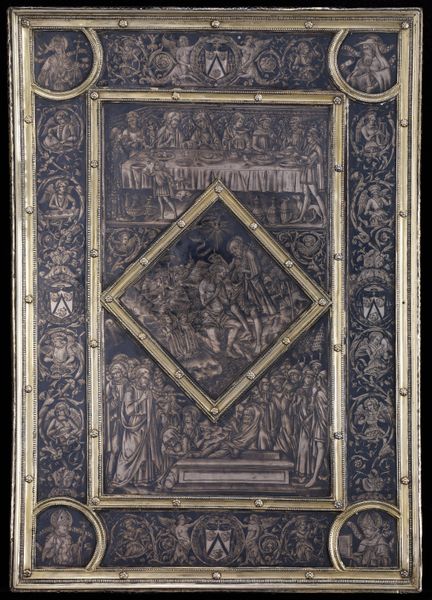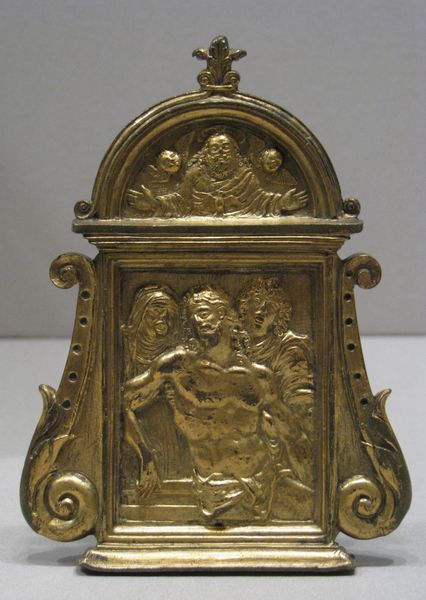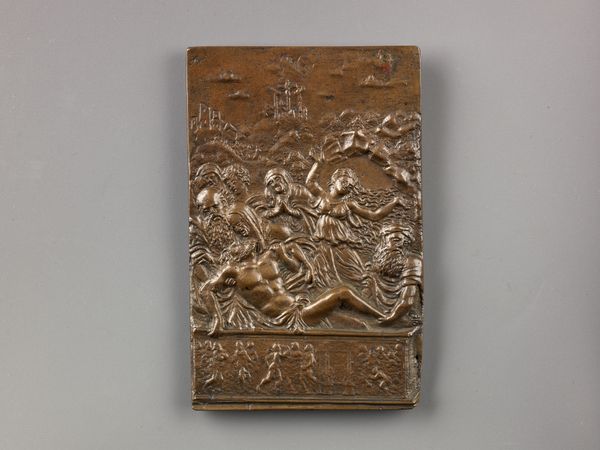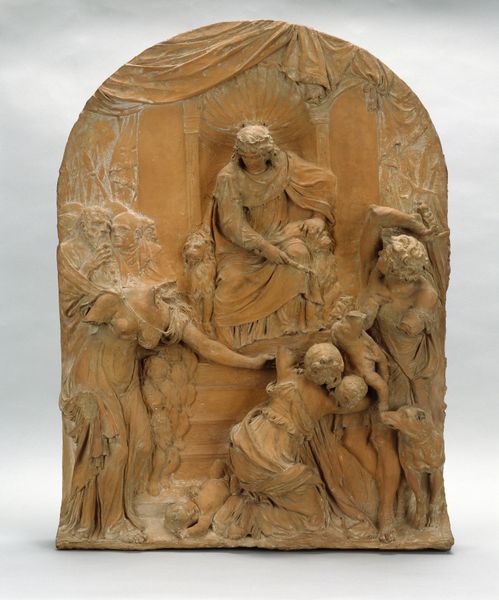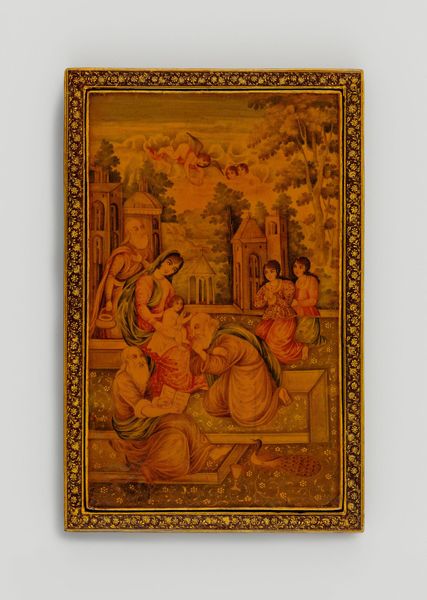
alabaster, relief, sculpture, marble
#
baroque
#
sculpture
#
alabaster
#
relief
#
figuration
#
sculpture
#
history-painting
#
marble
Dimensions: height 22.2 cm, width 19.5 cm, height 12.5 cm, height 9.8 cm
Copyright: Rijks Museum: Open Domain
Editor: This intriguing alabaster relief sculpture depicts the Baptism of Christ in the River Jordan, and it’s estimated to have been created sometime between 1600 and 1624 by Tobias van Tissenaken. I find the texture of the stone so compelling, how the artist has created depth and movement despite the limitations of the material. What can you tell me about this piece from a formalist perspective? Curator: Notice how Van Tissenaken has structured the composition. The figures are arranged in a clear, almost pyramidal formation, drawing the eye to the central act of baptism. Consider, too, the contrasting textures – the smooth skin of the figures against the rougher treatment of the landscape. What is the effect of this contrast? Editor: It emphasizes the figures, making them more lifelike, and also adds dynamism, it makes you wonder what the material might have felt like when new. Is it also fair to describe the lighting here as somewhat ‘theatrical’? Curator: Indeed. The play of light across the relief is critical. The artist uses light and shadow not merely to depict form, but to create a dramatic, almost stage-like effect. The varying depths of the relief capture light differently, heightening the sense of volume and imbuing the scene with a dynamic quality. Editor: So, the material itself and the way it's sculpted become crucial in conveying the drama and theological significance of the scene. Curator: Precisely. Formal analysis allows us to appreciate how the artist utilizes the inherent properties of the medium – the whiteness of the alabaster, its capacity to be finely worked – to amplify the spiritual impact of the narrative. It moves beyond pure illustration; the art *is* the message. Editor: This really shifts my perception. I was focused on the biblical story, but now I see how the artistic choices amplify its meaning in the visual language specific to this piece. Curator: And, further study using semiotics might reveal alternative explanations!
Comments
No comments
Be the first to comment and join the conversation on the ultimate creative platform.
